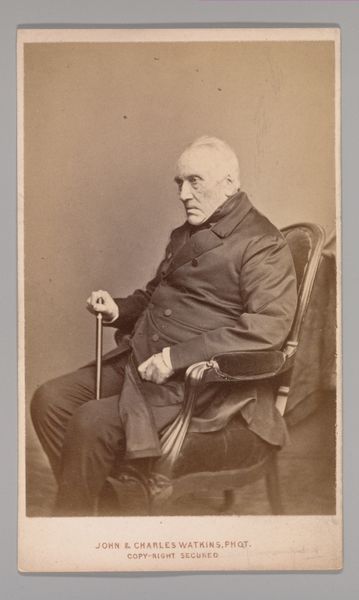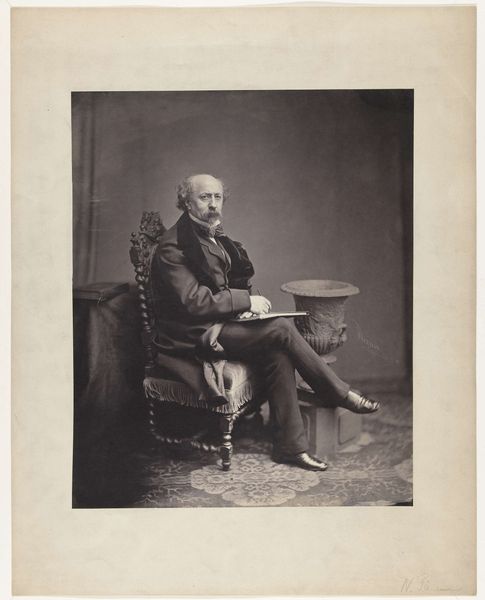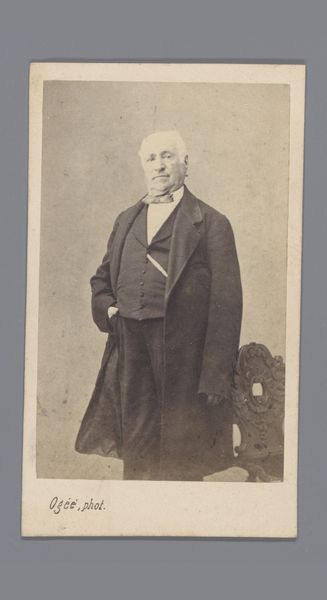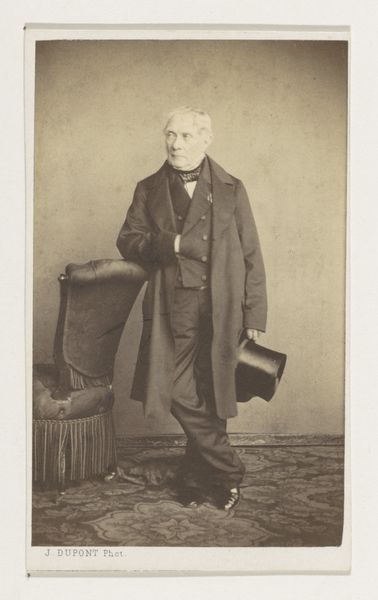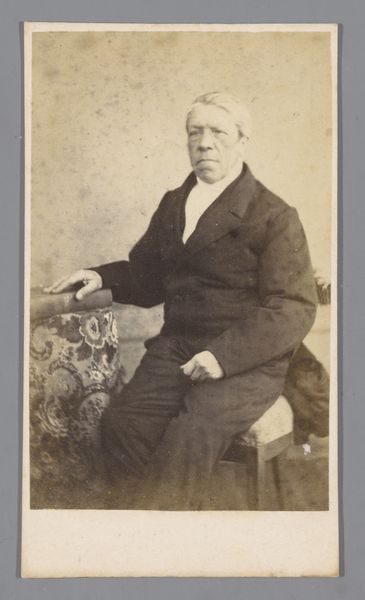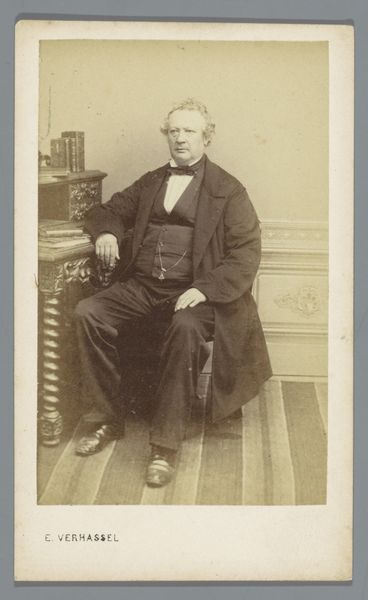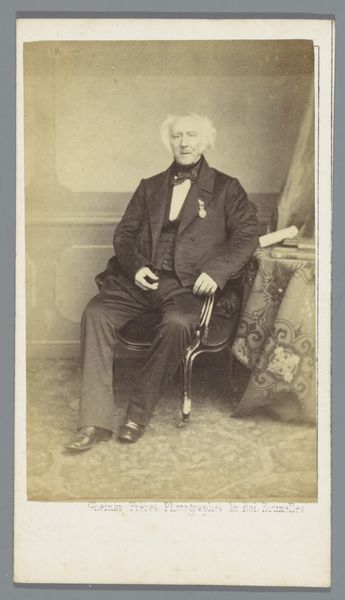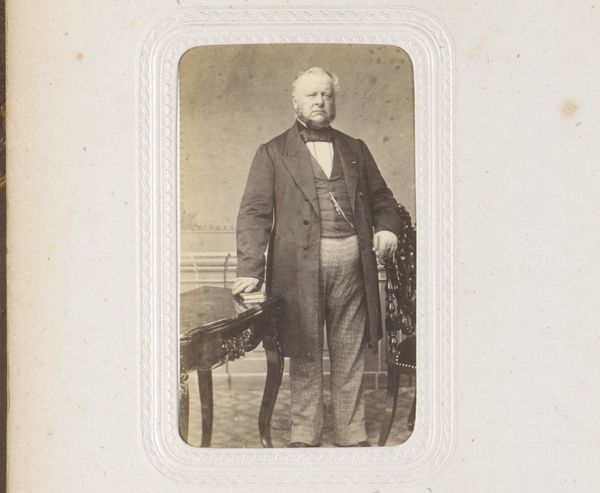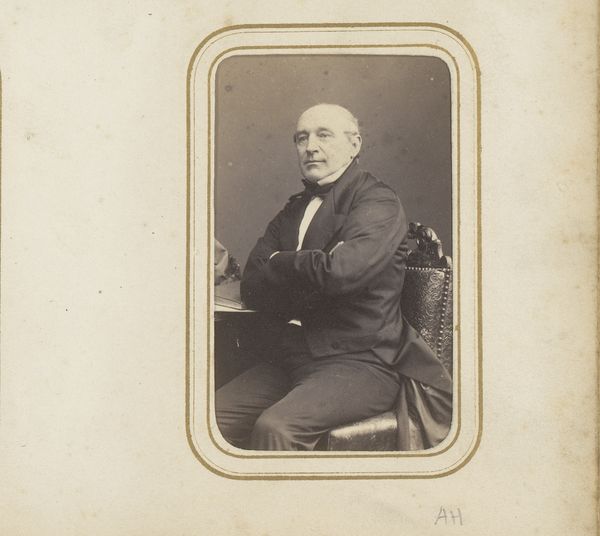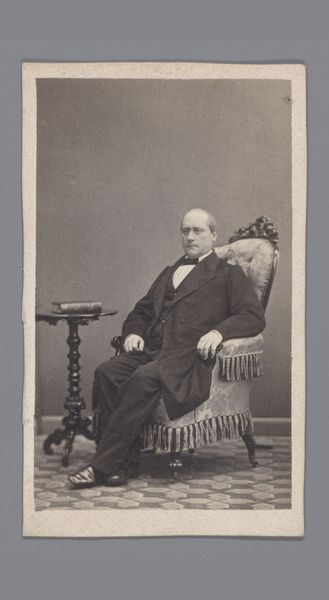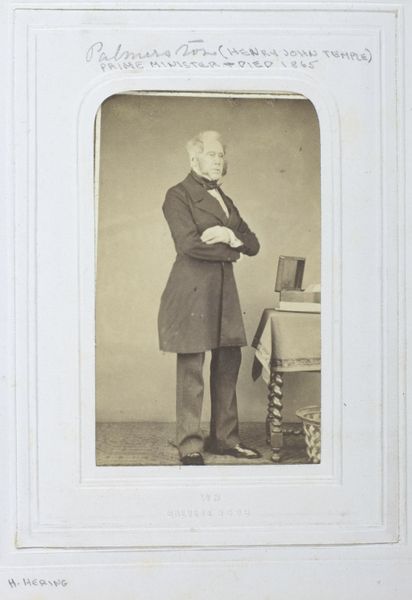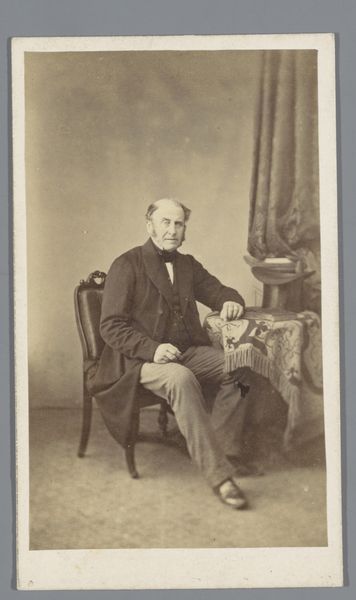
photography, gelatin-silver-print
portrait
photography
gelatin-silver-print
realism
Dimensions: height 104 mm, width 61 mm
Copyright: Rijks Museum: Open Domain
Curator: Here we have a portrait captured between 1858 and 1868 by François Joseph Delintraz. It’s titled, "Portret van een onbekende oude man," or "Portrait of an Unknown Old Man." The print itself is a gelatin silver print. Editor: The man's composure gives off an air of distinguished weariness, almost as if he's burdened by the weight of history itself. The detail in his clothes, that patterned chair, makes me wonder what social circles he occupied. Curator: Interesting observation, he certainly presents himself with poise. It’s fascinating how the then-nascent medium of photography was utilized, especially by studios like Delintraz, to produce images intended for public consumption, constructing a specific social and political identity. Editor: Precisely. And let's consider the materiality itself. Gelatin silver prints like this offered greater detail and tonal range. That clarity helped disseminate more "realistic" or perceived-truthful depictions across society. The proliferation of photographic studios democratized access to portraiture but it also made it part of consumer culture, as people began collecting and exchanging these types of portraits. Curator: That touches on another significant point: realism in this image served socio-political agendas. While seeming objective, realism can shape societal perceptions about class, power, and legitimacy, becoming crucial propaganda tools in constructing narratives. In contrast to painting traditions, photography promised veracity, lending considerable cultural weight to the photographic representation of leaders, wealthy families or even anonymous subjects that seemed "interesting" to the artist, creating and spreading ideas. Editor: Right. And those narratives influence not only historical interpretations, but how museums display and interpret photography to this day. Think about who is remembered and by which stories! What do the captions or surrounding artworks convey, or even suppress? Every presentation is itself a point of view on history, shaping collective memory. Curator: Absolutely, and perhaps that extends even to how photographic techniques themselves are taught and valorized – favoring technical virtuosity and historical accuracy over radical experimentation, in other words defining "quality" in photographic print making to promote certain practices over others. Editor: Indeed. When viewing a seemingly simple portrait like this, let's keep digging beneath surface-level admiration to challenge assumptions about how photography functions and perpetuates narratives through both time and public perception.
Comments
No comments
Be the first to comment and join the conversation on the ultimate creative platform.
